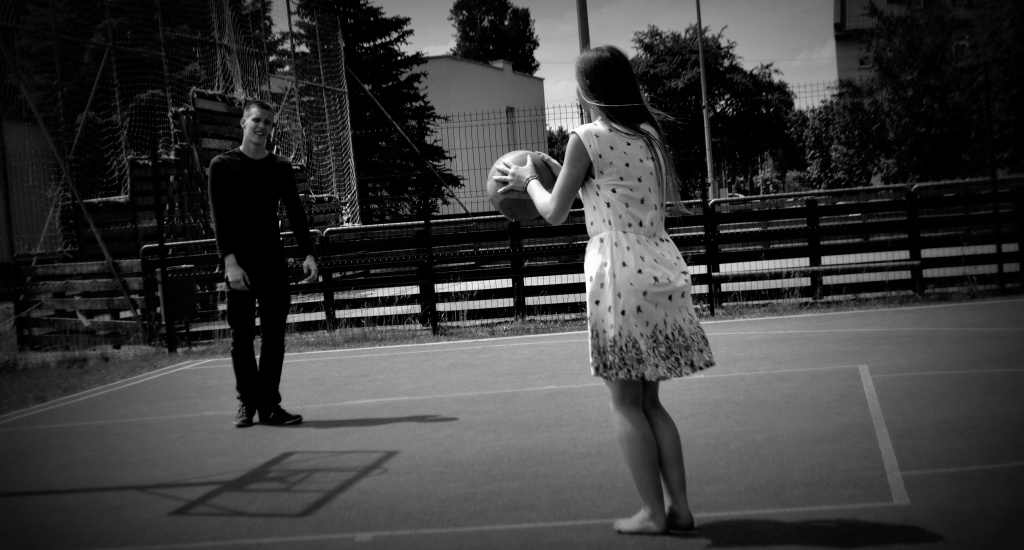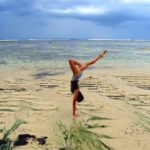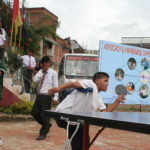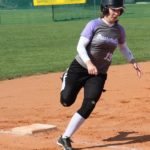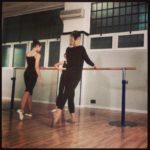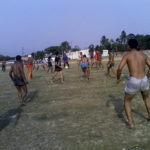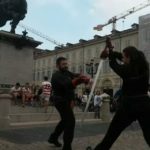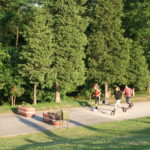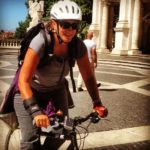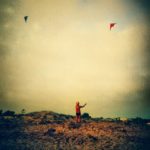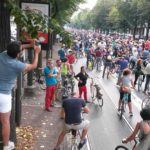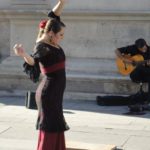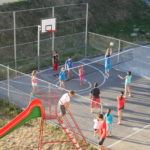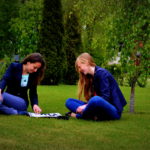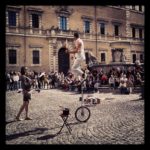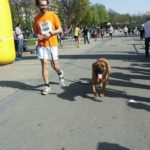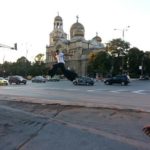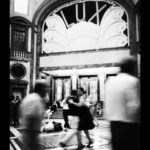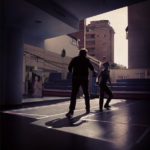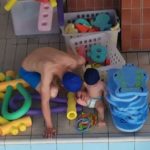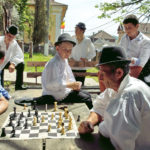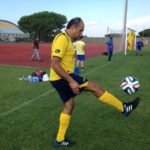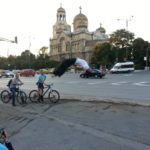This year the MOVE Congress held a photo contest for the first time called MOVE in a Click, inviting people worldwide to enter images that said something about physical activity to them. The winning photo was a black and white titled “No Limits” by 18-year-old Lithuanian secondary school student Greta Vaisėtaitė. ISCA spoke to Greta about what motivated her to enter the contest and the story behind “No Limits”.
1. How did you find out about the MOVE in a Click photo contest?
I found it in https://www.zinauviska.lt/lt/ website.
2. Why did you decide to send a photo for the MOVE in a Click photo contest?
When I participated in one contest last year, I filled in a postcard, on which I promised to myself to say “why not?” more. So, I started to look more optimistically at the world. I started to participate in various contests from then on.
3. What is the idea behind your photo? What does it say about physical activity?
Everyone can do sports. It doesn’t matter how old you are, how you look and so on.
4. Why did you take a picture of a boy and a girl playing basketball? And is there any reason why the girl is wearing a dress and has bare feet? And why did you call it No Limits?
That picture I took accidentally. They just played basketball and made a huge contrast, which I liked. Why No Limits? Because we see that girl isn’t ready to do sports and I just wanted to say that to do sports we don’t need to be ready – we can do it without any reason.
5. What is your idea of a good photo?
The most important aspects of a good photo for me are quality and a well expressed idea.
See below some other contributions for the #MOVEINACLICK
Interview with #MOVEinaClick winner Greta Vaisėtaitė
This year the MOVE Congress held a photo contest for the first time called MOVE in a Click, inviting people worldwide to enter images that said something about physical activity to them. The winning photo was a black and white titled "No Limits" by 18-year-old Lithuanian secondary school student Greta Vaisėtaitė. ISCA spoke to Greta about what motivated her to enter the contest and the story behind "No Limits". 1. How did you find out about the MOVE in a Click
Three speakers, three areas of action highlighted at MOVE Congress 2014 closing
It had been less than 48 hours since experts from Italy and abroad sat on the MOVE Congress 2014 stage to start the discussion on open and active cities. In the meantime, 36 speakers and moderators had led over 300 delegates through the many interwoven factors that make cities inviting spaces or barriers for physical activity. On the closing evening, three of these speakers pinpointed three areas they know better than most in which they thought the delegates could push for
Friday afternoon was something else
By Roxana Chiriac The project I’d like to see in my city An innovative initiative introduced by Sean Blair, the convenor of the MOVE Congress 2014 from Pro Meet UK, was the Open Space workshop. What is that, you may wonder? “Open Space workshop means having a coffee with a friend, where you declare what you want to talk about” and the participants can “use the law of two feet” and leave the discussion if they are not interested. The “coffee drinkers” were speakers, moderators
MOVE Congress 2014 Open Market
By Jana Stehlikova The Open Market took place outside the MOVE Congress venues in the so-called Matattoio, a former cattle shed, and offered several physical activities and poster presentations. The participants could try playing some Dodgeball as well as some Tchoukball, Traditional Table Games, Balance Exercise, Stopping Movement Training, and “Propriocettive” Activities. As the weather was perfect for such activities, a lot of people participated during the morning coffee breaks, taking a little break and stretching the body. They also had the opportunity
Notes and quotes from MOVE Congress 2014 Workshop 4: Active ageing
The fourth and final workshop of the MOVE Congress 2014, Active Ageing, delivered its promise of offering tools and advice to deliver effective physical activity initiatives for seniors. Miriam Schreck from Deutscher Turner-Bund (DTB) in Germany emphasised that fitting in with elderly people’s routines is both an important consideration and potential challenge for sports programme providers. When looking at sports facilities and clubs, providing qualified instructors, easy access to amenities, disabled access and an accepting environment are also essential: “The elderly have
Notes and quotes from MOVE Congress 2014 Workshop 3: Innovative approaches to mobilisation
By Jana Stehlikova At Workshop 3 dedicated to Innovative Approaches to Mobilisation, Kerry McDonald presented StreetGames, a sports charity that focuses on giving physical activity and volunteering opportunities to young people in disadvantaged communities across the UK through its Doorstep Sports initiative. His organisation’s effervescent take on physical activity was reflected in both the title of his presentation “Let’s Get Fizzical” and his message about mobilising hard-to-reach youth: “It is not only about the physical activity, what we offer must be funny
Notes and quotes from MOVE Congress 2014 Workshop 2: What are the barriers cities have that inhibit physical activity?
By Alexander Elverlund Piara Powar, Director of FARE Network, UK The first speaker of the workshop focusing on cities' roles in encouraging social inclusion through sport and physical activity, Piara Powar, talked about ways in which minorities relate to sport. FARE is not only working with racism but also barriers related to gender and sexuality. In this session he primarily addressed ethnic minorities, stating that less than 10 % of the EU population consists of ethnic minorities. These minorities are based in
Notes and quotes from MOVE Congress 2014 Workshop 1: How can school children become more active?
By Roxana Chiriac Niamh Murphy, from Waterford Institute of Technology, Health Behaviour Research Department, Ireland led the keenly anticipated workshop on programmes that have been successful in getting school children active in cities around the world. The first experienced speaker to tackle the important issue was William Bird, the CEO of Intelligent Health UK, who presented his project, “Beat the Street”. This innovative walking and cycling competition for school children has made the city of Reading in the UK more active than
Putting theory into practice
By Roxana Chiriac After two successful days with fruitful talks and knowledge sharing from experts in several fields of interest for MOVE Congress 2014, Friday was the day to put the theory into practice. To start the day, an introduction was given during the plenary session, let by two prominent figures in Italian grassroots sport, Filippo Fossati, from Italian Parliament and ISCA Europe Chair, and Nicola Porro, from the University of Cassino and Southern Lazio, who introduced the topic of Open
A grand arrival for MOVE Congress “urban orienteers”
In a MOVE Congress first, two groups of delegates set off to discover Rome in an “urban orienteering” session after the formal sessions wound to a close on 23 October. They were guided by two Italians (and their skilled translators) who knew Rome’s ancient and modern urban planning and inside and out – Dr. Renato Sebastiani from the Italian Ministry of Culture, and Gianluca Di Girolami, an archaeologist and President of UISP Roma. The 5km and 2km walks were each dotted

